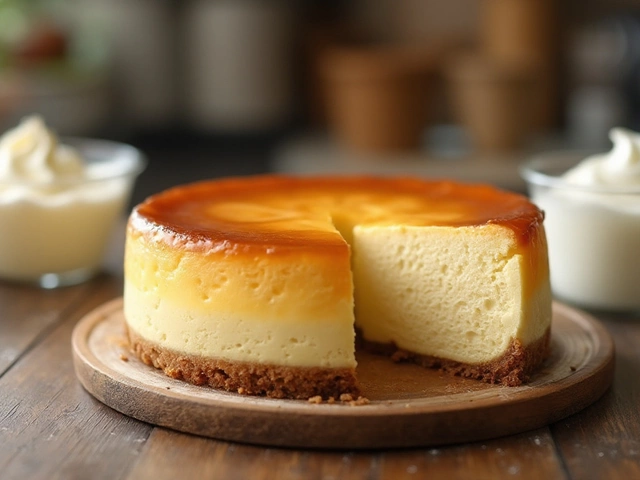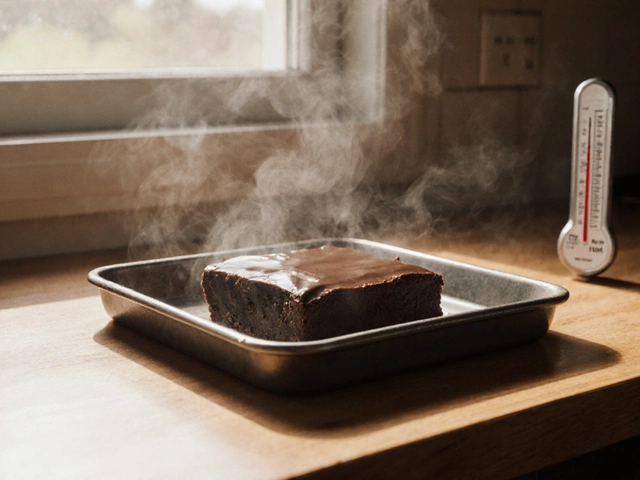Mascarpone Cheese: Uses, Storage, and Recipes
When working with Mascarpone, a buttery Italian cheese made from heavy cream, prized for its ultra‑smooth texture and subtle sweet flavor. Also known as Italian cream cheese, it sits at the heart of many classic and modern desserts. Its high fat content gives it a melt‑in‑your‑mouth quality that’s hard to match, making it a go‑to ingredient for anyone chasing that luxurious mouthfeel. Below you’ll see why chefs and home bakers alike keep a tub in the fridge.
One of the most famous desserts that relies on this dairy star is Tiramisu, a layered Italian treat combining espresso‑soaked ladyfingers, cocoa, and a creamy mascarpone mixture. The cheese provides the characteristic silkiness that balances the coffee’s bitterness. Because mascarpone can be whipped with sugar and egg yolks to form a stable frosting, the same base can populate other layered cakes, mousse, and even fruit‑topped puddings. If you’re looking for a quick way to upgrade a simple vanilla cake, swap half the buttercream for a mascarpone blend and watch the texture turn cloud‑like.
Although mascarpone often shares the spotlight with ricotta, the two cheeses serve different roles. Ricotta, a fresh cheese made from whey, known for its light, grainy texture, is perfect for stuffed pastas and fluffy pancakes. In contrast, mascarpone’s dense creaminess makes it ideal for thick sauces and decadent fillings. Understanding this distinction helps you decide when a recipe needs a light lift versus a rich body. For instance, a lasagna with a béchamel‑mascarpone layer feels richer than one using ricotta, while a cheesecake benefits from the cheese’s smoothness.
Speaking of cheesecake, many modern recipes replace or supplement traditional cream cheese with mascarpone for a silkier crumb. Cream cheese, a firm, tangy cheese made from milk and cream, commonly used in cheesecakes and spreads, provides structure but can leave a slightly dense mouthfeel. Mixing mascarpone into the batter introduces extra moisture and a buttery flavor, resulting in a lighter, melt‑away slice. This swap is especially useful in no‑bake or chilled cheesecakes where you want a truly creamy finish without the heaviness of pure cream cheese.
Keeping mascarpone at its best starts with proper refrigeration. Store it in the coldest part of your fridge, ideally at 2‑4 °C, and keep the original lid tightly sealed. Once opened, aim to use it within five to seven days; beyond that the texture can become grainy and the flavor may sour. If you notice a thin liquid layer on top, gently stir it back in – that’s just whey separating, not spoilage. For longer storage, you can freeze mascarpoon in airtight containers for up to two months; just thaw it slowly in the fridge and give it a quick whisk before use.
Beyond sweets, mascarpone shines in savory dishes, too. A spoonful stirred into risotto creates a luxurious finish without the heaviness of butter. It also works as a base for creamy sauces that coat grilled vegetables or pan‑seared fish. Pair it with fresh herbs like basil or chives, a splash of lemon juice, and you have a quick dip that rivals any artisanal spread. The cheese’s mild flavor means it adapts well to both sweet and salty palettes, making it a versatile staple for any kitchen.
From a nutritional standpoint, mascarpone is calorie‑dense, delivering around 450 kcal per 100 g, primarily from fat. It supplies modest amounts of calcium and vitamin A, but its high saturated fat content means moderation is key. For those watching their intake, consider using half the amount called for in a recipe and supplementing with low‑fat Greek yogurt to maintain creaminess while cutting calories. This trick works great in frosting, where the tang of yogurt balances the richness of the cheese.
Now that you’ve got the basics – what mascarpone is, how it differs from ricotta and cream cheese, ways to store it, and ideas for both sweet and savory dishes – you’re ready to explore the full collection of articles below. Whether you’re after a classic tiramisu guide, a quick cheesecake swap, or tips on extending the cheese’s shelf life, the posts ahead break down each topic with step‑by‑step details and practical advice.

Mascarpone cheese origin: history, production, and role in tiramisu
Explore the history, production and key facts behind mascarpone cheese, its Lombard roots, how it's made, and why it became the essential ingredient in tiramisu.
View More




